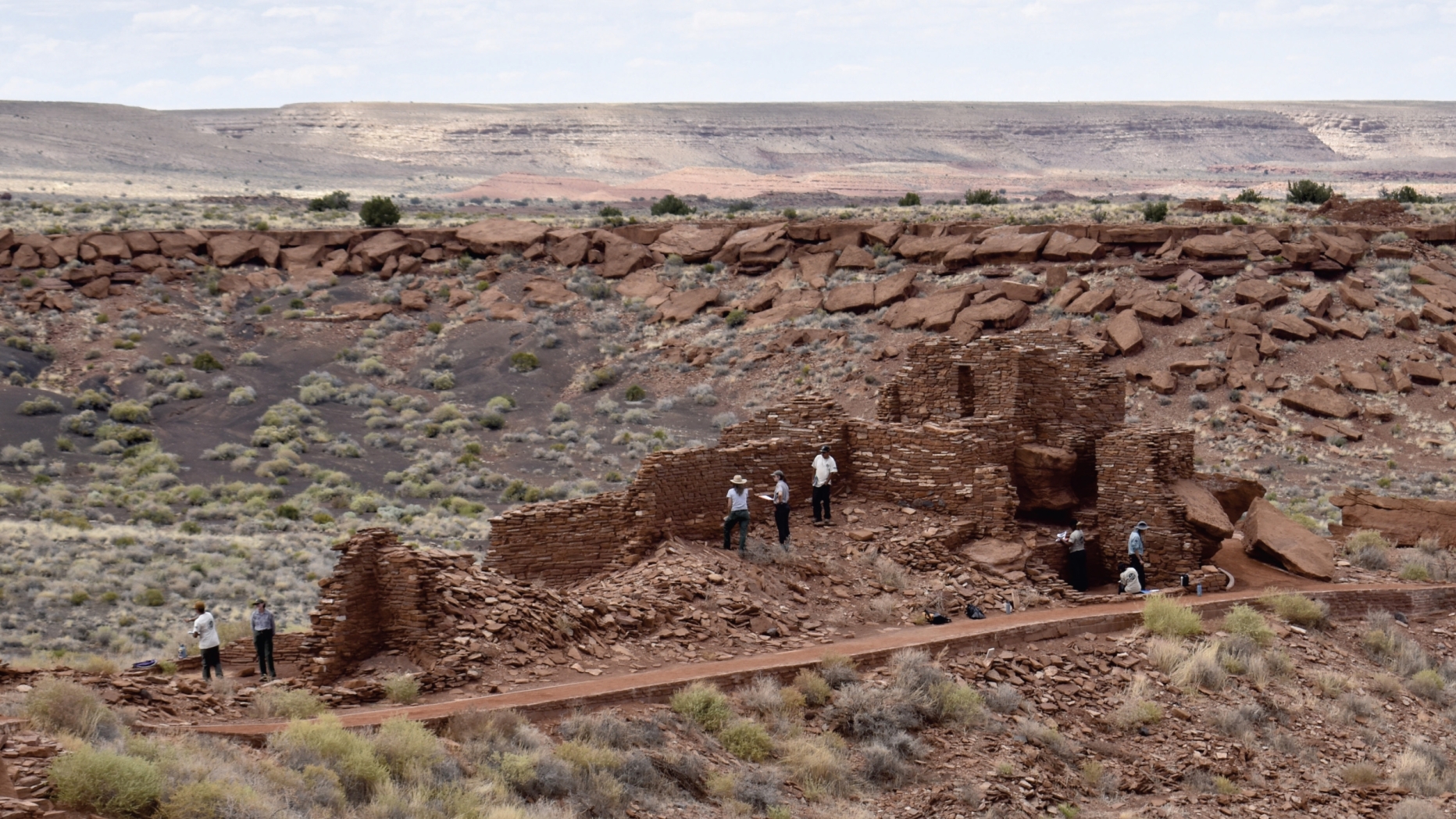Preservation Management Plan for Wupatki Pueblo

Photography of the Weitzman team's work at Wupatki Pueblo in 2023 and 2024 is featured throughout the Preservation Management Plan. Photo: Ha Leem Ro.
Stuart Weitzman School of Design
102 Meyerson Hall
210 South 34th Street
Philadelphia, PA 19104

Photography of the Weitzman team's work at Wupatki Pueblo in 2023 and 2024 is featured throughout the Preservation Management Plan. Photo: Ha Leem Ro.
Wupatki Pueblo, about 45 miles from Flagstaff, Arizona, is the largest free-standing pre-contact structure in Northern Arizona. Built upon a sandstone outcrop, this 100-room pueblo was once a thriving trade center, drawing people from across the Southwest. Though its residents moved on in the late 13th century, the site remains deeply significant to the 13 federally recognized tribes connected to Wupatki National Monument.
Wupatki Pueblo's architecture reflects its role as a cultural crossroads, with materials and artifacts sourced from far beyond the region. Since the 1930s, the National Park Service (NPS) has worked to preserve the site, but past restoration efforts have presented challenges—such as the use of incompatible mortars that can weaken the structure over time. These issues, combined with changing environmental conditions and limited resources, highlight the urgent need for a forward-thinking approach to cultural resource management. Moving beyond questioning whether the climate is changing, the focus is now on what comes next—how to mitigate and adapt to the effects of climate change. For Wupatki Pueblo, this means understanding its vulnerabilities, particularly as an open-air archaeological site built with rubble stone masonry, which makes it highly sensitive to environmental stressors.
To address these challenges, the Wupatki Pueblo Preservation Management Plan (PMP) was developed by the Center for Architectural Conservation and partners as a proactive strategy for long-term conservation. A key part of this effort is a vulnerability assessment—evaluating the site’s exposure to climate shifts, its sensitivity to those changes, and its ability to adapt. With Wupatki’s high exposure and susceptibility, planning for adaptation and implementing the right conservation strategies—one that accounts for both environmental and material vulnerabilities—are critical to ensuring its resources, structures, and cultural values remain intact for future generations.
Learn about the research and development of the Plan via this Weitzman News story.